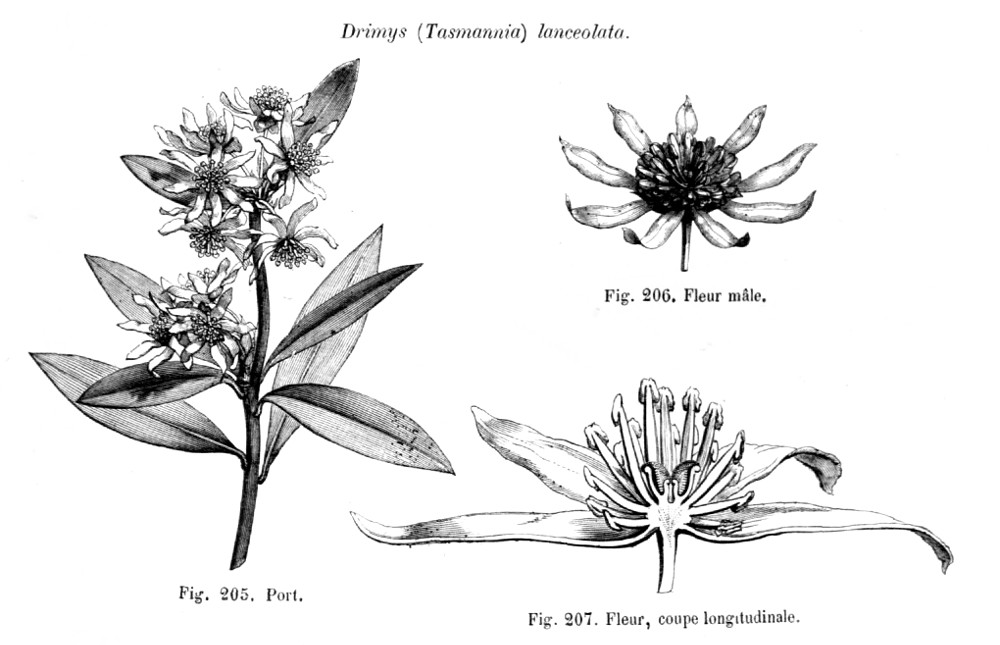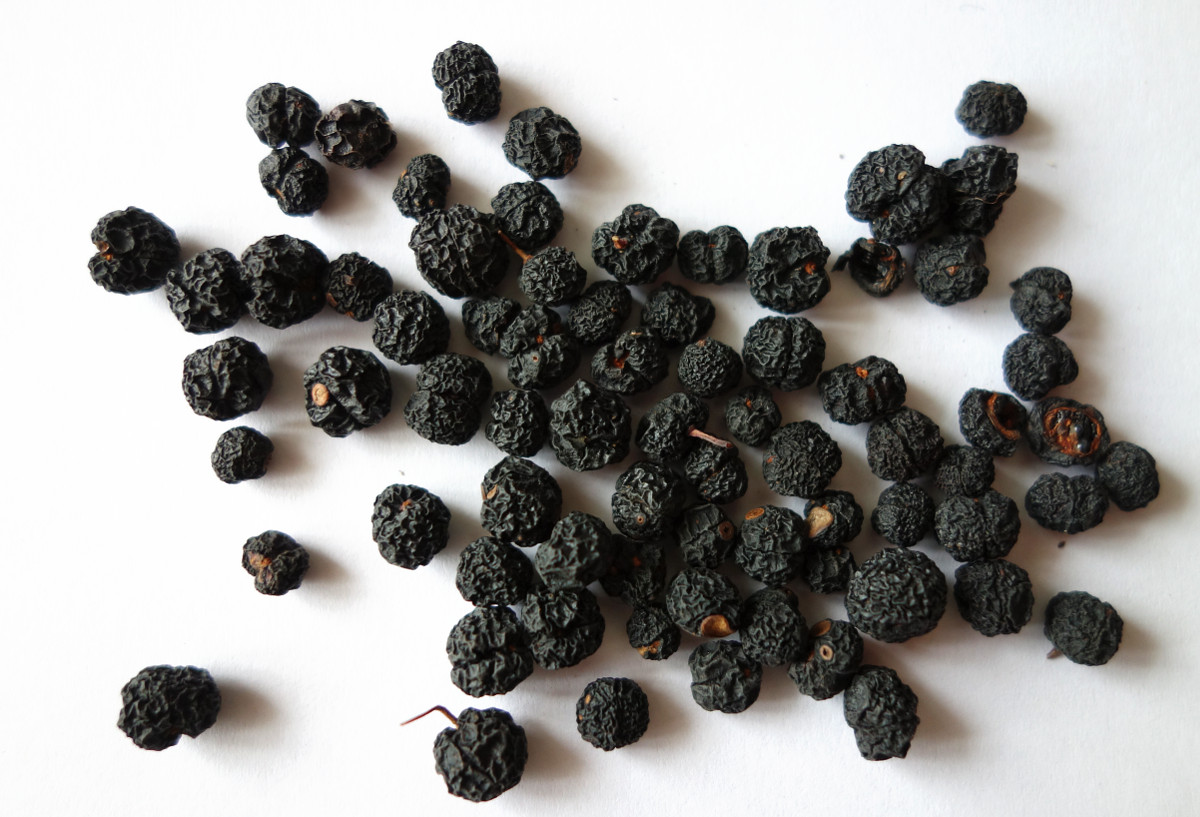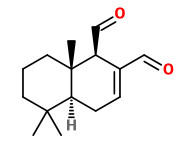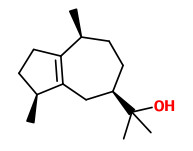Tasmannia lanceolata (Poir.) A.C.Smith - syn.Tasmannia aromatica R.Br. ex DC.; Drimys lanceolata (Poir.) Baill. - Winteraceae
Tasmanian pepper, mountain pepper, Tasmanischer Pfeffer, Bergpfeffer
Evergreen shrub or small tree, native to South Australia, Tasmania; branchlets and leaf stalks reddish; leaves alternate, thick, lanceolate to narrow-elliptic or oblanceolate, with numerous fine dots (oil glands) which produce an aromatic smell when the leaf is crushed, and own a hot taste when chewed; flowers small, yellow or creamy white.
„Polygodial has been identified as the primary active compound in Tasmannia lanceolata, and is also responsible for its peppery taste… The leaf and berry are used as a spice, typically dried. Mountain pepper was used as a colonial pepper substitute. More recently, it has become popularised as bushfood condiment.“
http://en.wikipedia.org/wiki/Tasmannia_lanceolata
„The leathery leaves of mountain pepper contain hot-tasting compounds (polygodials) which, together with many of the aromatic compounds found in the essential oil, result in an unusual fragrant, spicy flavour. The berries initially have a sweet taste, which is closely followed by an intense pungency (which does not last), giving way to a sensation of numbness. The leaves and berries are currently used in Australia to add a spicy bush food flavour to many foods. They are used to flavour curries, cheeses, wines, salad dressings and some boutique alcoholic beverages and as a substitute for black pepper.“
[Tasmannia lanceolata Notesheet, Flora of Tasmania, Tasmanian government, retr.May 2015]
PDF
The typical T.lanceolata oil cell sample contained polygodial (52%), a polygodial breakdown product (30%), and guaiol (8%). „Polygodial normally represents 25-35% by weight of the whole leaf extract, while guaiol is usually present at levels well below 2-3%“
[Analysis of the contents of oil cells in Tasmannia lanceolata (Poir.) AC Smith (Winteraceae)., Read, C., Menary, R., Annals of Botany, Vol.86(6), 2000, 1193-1197]
PDF
„Volatile components account for the majority of the T. lanceolata phytochemical profile, accounting for as high as 6% of the dry weight of the plant material. For this reason, until recently, research into T.lanceolata phytochemistry has largely concentrated on these components. A recent analysis of commercial essential oil components reported these to be predominantly sesquiterpenic, with polygoidal (36.74%) being the major component. Other sesquiterpenoids occur at lower levels in T. lanceolata essential oils and are known to vary widely between individual plants. An analysis of commercial T. lanceolata essential oils reported that guaiol (4.36%), calamenene (3.42%), spathulenol (1.94%), drimenol (1.91%), cadina-1,4-diene (1.58%),
5-hydroxycalamenene (1.47%), bicyclogermacrene (1.15%), α-cubebene (0.88%), caryophyllene (0.87%),
α-copaene (0.48%), cadalene (0.44%), δ-cadinol (0.4%), elemol (0.39%), T muurolol (0.39%) and germacrene D are particularly abundant.“
[The phytochemistry and chemotherapeutic potential of Tasmannia lanceolata (Tasmanian pepper): A review., Cock, I.E., Pharmacognosy Communications, vol.3(4), 2013, 1-13]
PDF

Tasmania lanceolata, Mackay St, Springvale South, VIC, Australia (2025) © mattmaceac CC BY-SA 4.0 inaturalist.org

Tasmannia lanceolata as Drimys lanceolata
Baillon, H.E., Histoire des plantes, vol.1, p.159, fig.205-207 (1866-1869) [A.Faguet]
plantgenera.org

Dried fruits, „mountain pepper“ © Andreas Kraska CC BY-SA 4.0

